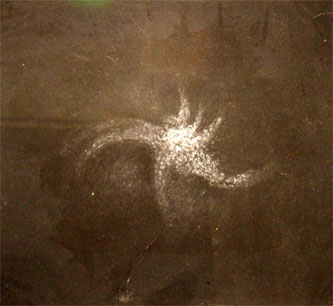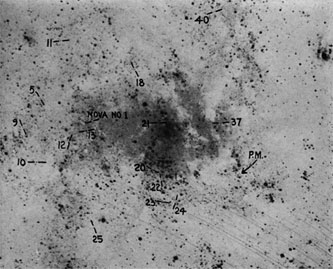Extragalactic objects/
Pinwheel galaxy
Background image: the Pinwheel galaxy
Zoom in to see more >
Abd al-Rahman al-Sufi (Azophi), a Persian astronomer, made the first recorded observations of the Andromeda Galaxy and the Large Magellanic Cloud in his Book of Fixed Stars published in 903 AD. Almost a century later, parallax measurements by the Arabian astronomer Ibn al-Haytham (Alhazen) refuted Aristotle’s suggestion that the Milky Way was located close to the Earth’s atmosphere. Subsequently Ibn Bajjah (Avempace) of Islamic Spain, and
Ibn Qayyim Al-Jawziyya of Syria, speculated that the Milky Way was made up of stars, but it was not until Galileo’s telescope observations in 1611 that this matter was conclusively settled.
The relationship of extended objects, called nebulae, of the kind observed by Azophi to the Milky Way remained unknown. Immanuel Kant was the first to speculate that nebulae were extra-galactic objects (called by him ‘island universes’), but on this matter astronomers remained divided.
Telescope observations made in the early nineteenth century of the spiral structure to certain nebulae were highly suggestive, in support of Kant's hypothesis. Notable among them were observations made by William Parsons, 3rd Earl of Rosse, using a 72-inch speculum-metal reflector, of the bright nebulae M33, M51, and M101.

Drawing of the spiral nebulae M33 by Lord Rosse in about 1850.
Also suggestive was the discovery in the late 1890s that the spectrum of such nebulae is continuous, rather than discrete: nearby stars in the Milky Way had a discrete spectrum. But conclusive evidence was only forthcoming with Hubble’s observations in the period 1919-1923 using the 100 inch Mt Wilson telescope. The crucial new datum was Hubble’s discovery that nebulae such M31 and M33, the Andromeda and Pinwheel galaxies, not only contained stars but also contained Cepheid variable stars (‘standard candles’), thus permitting an estimate of their absolute distance from their apparent luminosity. On this basis both nebulae were deteremined to be of the order 2-3 million light years from the Earth, whereas the Milky Way was known to be no more than 120 thousand light years in diameter.

Hubble's photographic plates of the center of M33, taken in April 1926, with Cepheid variables marked. The original resolution has been preserved from plate to journal to scanner to web page to your computer. Looking closely, you will see that the gray "nebulosity" is broken up into little specks that are individual stars. (The plate is a negative, as was the convention for publishing results at this time.)
The visible universe is currently about 18 million light years in extent, but it is almost certainly much larger and may even be infinite. Current estimates of the number of galaxies contained in the visible universe range from 200 to 500 billion galaxies.
LinksAuthor: Simon Saunders > |
|
|


